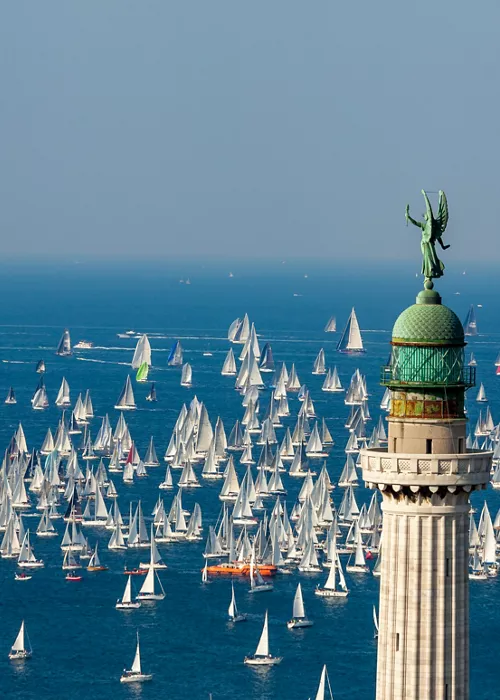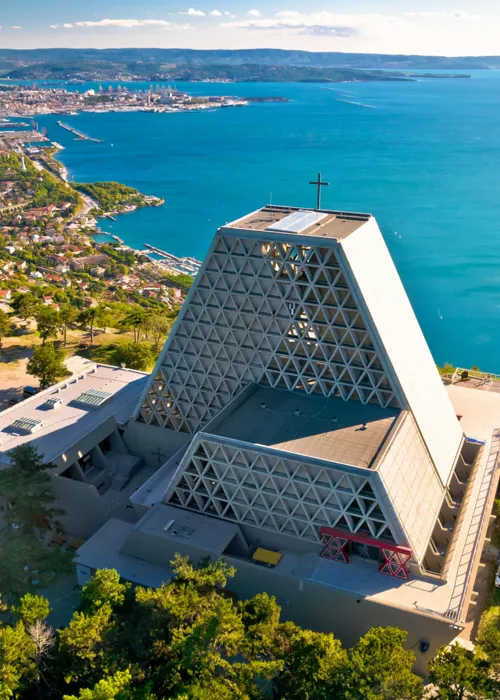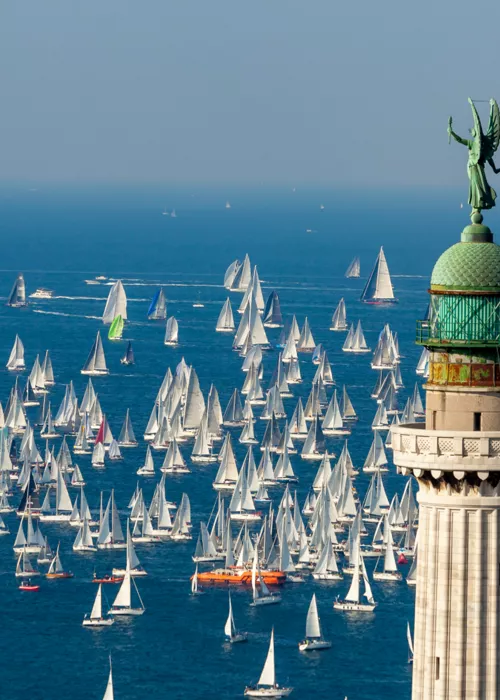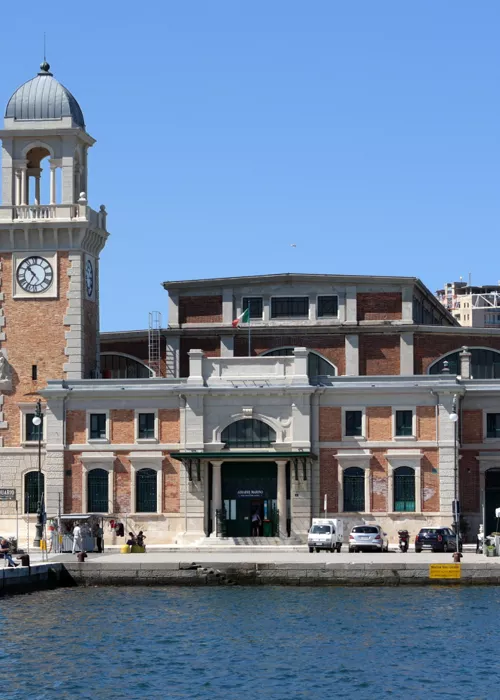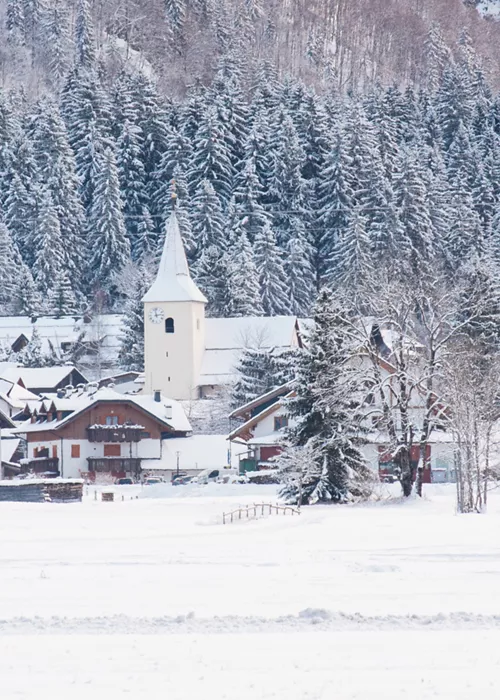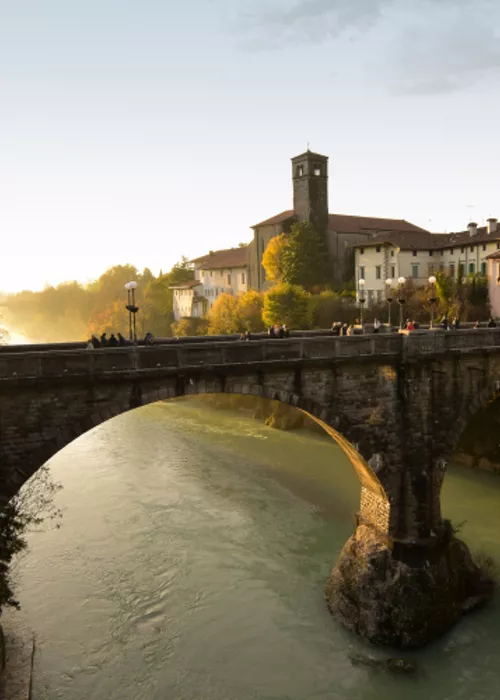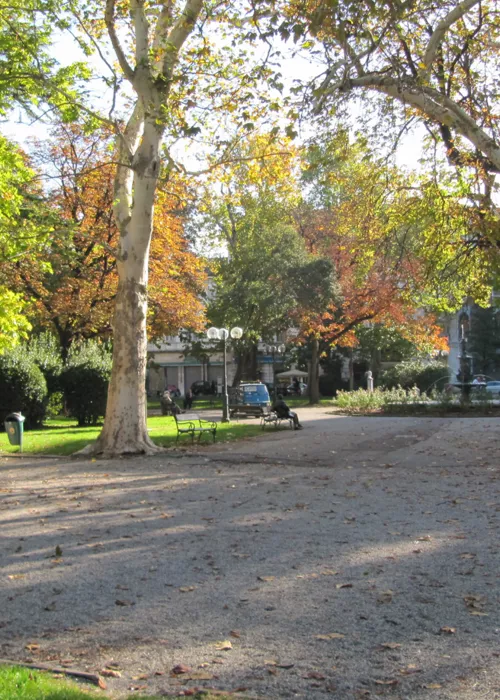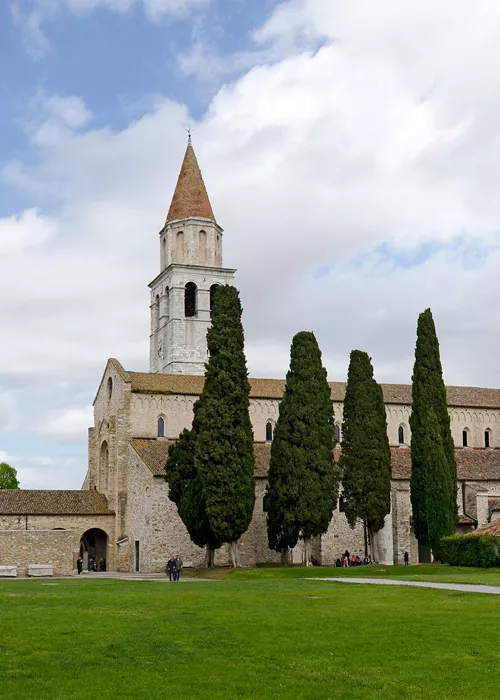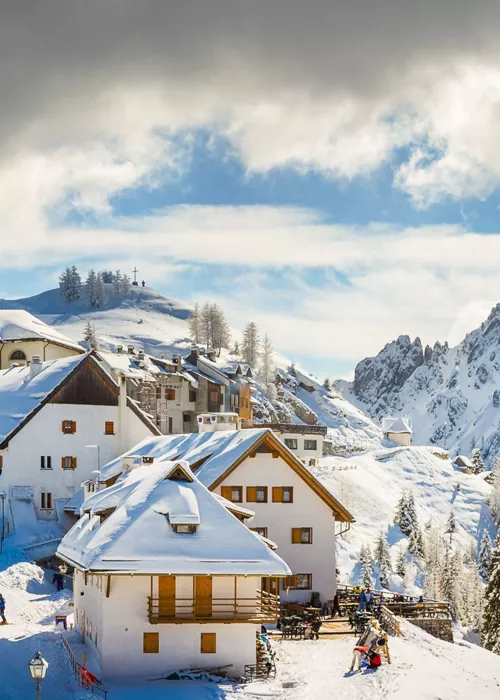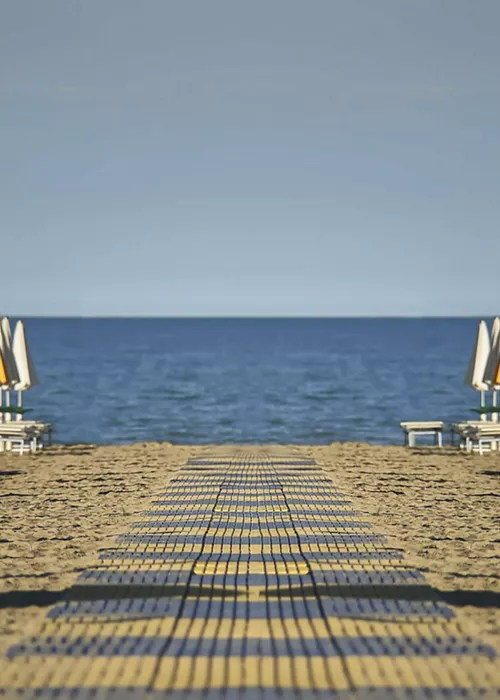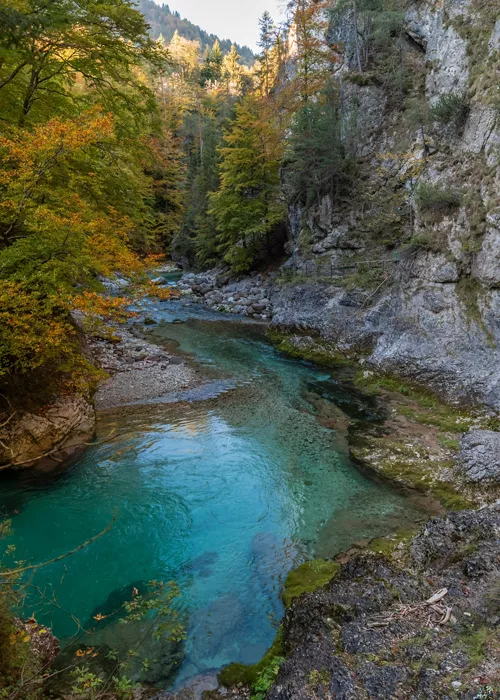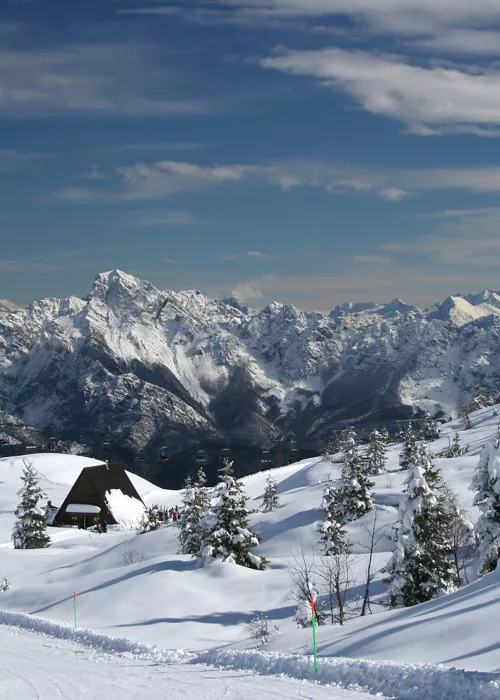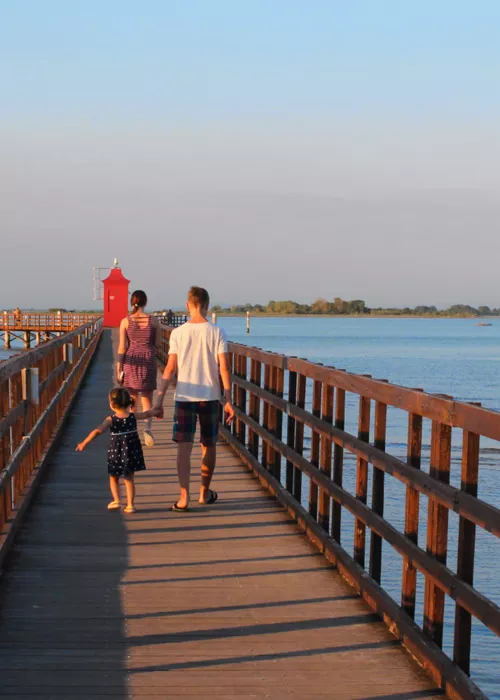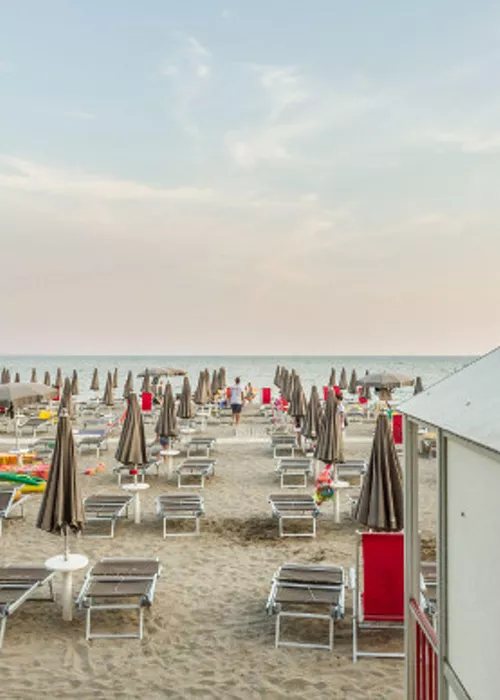The water axis of Borgo Teresiano, the Trieste district designed at the behest of Maria Theresa of Austria, is a canal-harbour excavated in the mid 18th century, which allowed the loading and unloading of sailing ships right into the heart of the city. It is flanked by buildings and churches that, together, create a unique backdrop. Overlooking the sea, at the meeting point between the Grand Canal and the banks, Palazzo Berlam or the red skyscraper, as the people of Trieste call it: it was built between 1926 and 1928 to a design by the Triestine architect Arduino Berlam, and at the time, a six-storey building appeared exceedingly tall to human eyes. It is flanked by the elegant Palazzo Gopcevich, with its beautiful yellow and red Greek facade; today it houses the Carlo Schmidl Theatre Museum. A sign of the glorious maritime past is the Palazzo Carciotti, from the early 1800s, for centuries the harbour master's office and perhaps the finest example of Trieste neoclassicism.
At the centre of the canal, the Ponterosso was originally a drawbridge until 1842, then became a revolving bridge until 1925, but today, like all the other bridges, it is fixed, and only boats can moor there.
In the background, in addition to the coffee tables, the perspective of the canal is framed by the nineteenth-century façade of Sant'Antonio Taumaturgo or Sant'Antonio Nuovo, the largest church in Trieste. On what was originally the innermost section of the canal, now buried under the name of Piazza Sant'Antonio, looms the mole of Saint Spyridon Church (or, to be more precise, Santissima Trinità e San Spiridione Taumaturgo), commissioned by the Serbian Orthodox community; inside, the 19th-century iconostasis and silver furnishings are conspicuous.
On one of the bridges, the life-size statue in honour of James Joyce is a reminder that the extraordinary Irish writer spent most of his adulthood here in the city, publishing, among other things, Dubliners and writing the crucial first chapters of Ulysses. There is a museum dedicated to him in Trieste and every year Bloomsday is celebrated on 16 June, the day on which Ulysses took place in 1904.





